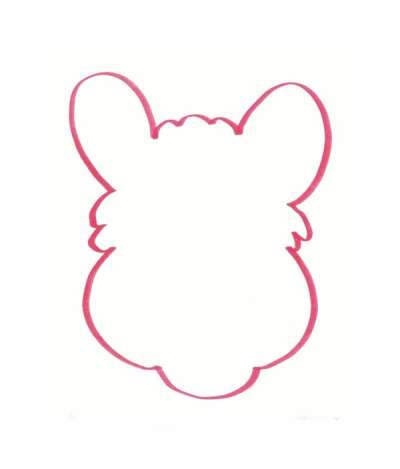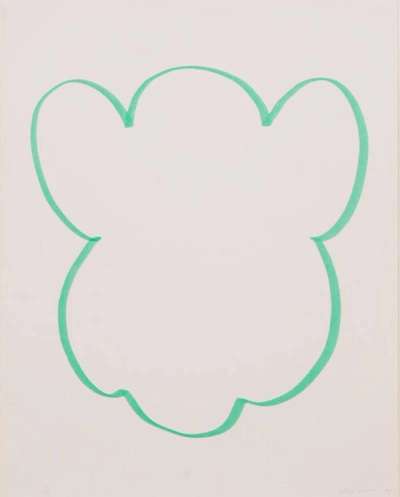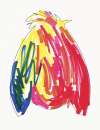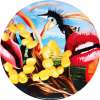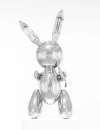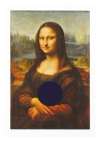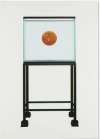Fun
Jeff Koons’ 1998 suite of three prints, Fun, comprises minimalistic lithographic works. They each feature a singular outline in green, red, and purple of a cartoonish head, including Disney’s version of Eeyore, and anticipate Koons’ later work Donkey (coloured) (1999).
Jeff Koons Fun For sale
Fun Market value
Auction Results
| Artwork | Auction Date | Auction House | Return to Seller | Hammer Price | Buyer Paid |
|---|
Sell Your Art
with Us
with Us
Join Our Network of Collectors. Buy, Sell and Track Demand
Meaning & Analysis
If there is one word that could be used to sum up Jeff Koons’ œuvre, ‘fun’ is certainly it. A divisive figure in the world of Contemporary Art, Koons’ work is well-known internationally for striking a balance between a certain deference towards the excesses of American consumerist culture – a subject with which Pop Art and Koons’ self-avowed idol, Andy Warhol, was fascinated – and veiled evocations of philosophical meditation on complex issues ranging from the nature of life and death to social mobility, childhood and familial relationships. Rare examples of Koons’ line drawings, Fun (green) (1998) and Fun (red) (1998) echo later works such as Donkey (coloured) (1999), which itself references a recurring motif of the artist’s 1999 output: ‘Eeyore’ from A.A. Milne’s ‘Winnie the Pooh’ children’s novels. As visual allusions to illustrator Stephen Slesinger’s 1960s adaptations of E.H. Shepard’s original character illustrations, Fun (green) and Fun (red) also parody the ubiquity – and banality – of the Disney Corporation’s garish iconographies, as well as their sustained saturation of mass cultural markets almost 100 years after its initial foundation in 2023.
Although consistent with two-dimensional line drawings, these works – much like the Drawings series – allow us to play witness to the genesis of the artist’s sculptural works, namely his mirrors, which pepper the deliberately tongue-in-cheek Easyfun (1999) series. With self-explanatory names such as Cow (1999), Donkey (1999), and Elephant (1999), these mirrors proffer the recognisable outlines of cartoon-like animals, exuding the artist’s Pop Art sensibilities as well as his former profession of commodities broker on New York’s Wall Street. In Fun, the stylistic reverberations of the Celebration series, which Koons began in 1993, can also still be felt. A large-scale series comprising 16 monumental sculptures and 16 photorealist paintings, Celebration encapsulates some of Koons’s most well-known – and sought-after – creations, each of which he has dubbed his ‘celebrations’. According to Koons’s, each ‘celebration’ makes direct reference to life’s milestones, be they birthdays (Pink Bow, Cake, Ribbon, Diamond, a Party Hat), times of gift-giving (Balloon Dog, Balloon Flower), or even Christian religious festivals, such as Easter.
Renowned for employing master craftspeople to create sculptures on his behalf, Koons uses Fun (green) and Fun (red) as means to construct a genealogy of his work. Initial designs, they were likely later communicated to companies such as Carlson & Company, a California-based fabrication and engineering firm, and Arnold, a similar outfit located in the German city of Frankfurt. During the 1990s, Koons worked with these two firms at length, with several others reportedly having gone bankrupt during their time spent working for the artist. The realisation of Koons’ work during this period involved an enormous amount of money; indeed, these drawings make indirect reference to the financial exuberance of Koons’ artistic philosophy, with as little as a simple line drawing apparently vaunting its disproportionate ability to be first translated into a three-dimensional artwork, and then be sold for huge amounts at auction. There is a relentless playfulness and optimism that pervades these works; when the viewer looks at them, they stare not only into the reflective essence of the artwork, but the essence of an increasingly profit-orientated commercial art market, of which Koons is perhaps the foremost proponent. These works highlight elements of Koons’s personality and œuvre that have apparently been highly visible to his friend, British artist Damien Hirst, for many years. Commenting on Koons and his work, Hirst once stated, “America is very jaded, but Jeff’s not […] the responsibility is on the viewer, not on the artist, and I think Jeff does that time and time again”.
